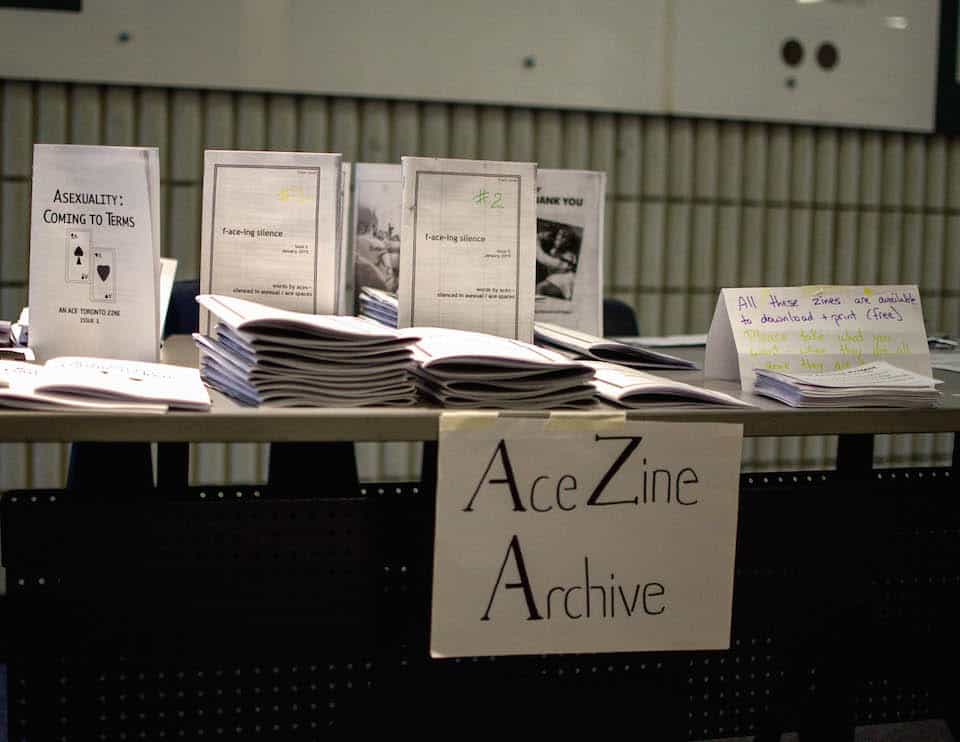The 2015 North American Asexuality Conference (NAAC) took place June 20 and 21 at U of T. It was put on by Asexual Outreach, a non-profit organization that supports and empowers people identifying as asexual.
Asexuals, who sometimes refer to themselves as “aces,” comprise an estimated one per cent of the population. The conference brought together around 300 aces, LGBTQ+ service providers, and activists for two days of keynotes, workshops, panels, and community building. The open-forum “unconference” portion of the weekend featured topics such as Feminism and Asexuality, Queer-Platonic Partnerships, and Asexuality and Religion.
Brian Langevin is a U of T equity and sexual diversity studies student. He is also the co-founder of Asexual Outreach, and organized the NAAC. The Varsity interviewed him the week leading up to NAAC 2015.
When asked what “asexual” means, Langevin replied, “The easiest way to define it would be an asexual person is someone who does not experience sexual attraction to other people,” adding that “Before 2001 when David Jay founded asexuality.org, and even still today, aces lived their entire lives feeling like they were broken. Or like there was no one like them, and probably almost all of them never met anyone else who had the same experience.”
According to Langevin, one of the issues faced by aces is the idea that their lack of sexual attraction should be “cured” medically. “Obviously if you were to try to do that to a gay person there would be public outcry, but people don’t really see the connect there.” This sentiment is borne out fictionally in an example of another issue, namely representation of aces in the media. Langevin cites a problematic episode of House in which a patient identifying as asexual is “cured” of asexuality by removal of a tumor near his pituitary gland. This resolution affirms the doctor’s mistaken opinion that “everyone loves sex unless they’re sick, dead, or lying.”
Langevin is a social justice leader working for societal acceptance and inclusion across the entire ace community. This involves a stated intention to centre people who have been marginalized. An excerpt from the NAAC mission statement on asexualoutreach.org reads, “We strive to center and empower members of the community who have been silenced, erased, and left out. This especially includes people of color, people with disabilities/disabled people, and survivors of trauma and abuse.”
He notes that asexuality is harder for society to understand than homosexuality. “With asexuality [people] are like, but how do you not experience something that everyone else seems to?” And of course, it’s a two way street: he says “It’s as difficult I figure for non-asexual people to understand not experiencing sexual attraction as it is for asexuals to understand sexual attraction… because I’ve never experienced it there’s no way to contrast it with what I experience.”
Langevin first noticed he was different from non-asexual people in middle school when his classmates were developing crushes on each other. They would ask “Who do you think is hot?” and ‘If there was one celebrity you could bang, who would it be?’” When Langevin was faced with the question “Who do you like?” He would respond “‘I don’t like anyone, and that wasn’t an acceptable answer, for whatever reason, so I ended up making up people, often, to appease their curiosity… people saying oh he’s so hot, she’s so hot and I just don’t get that, I don’t know what you mean.’”
Langevin’s message to his fellow U of T students is this: “Regardless of your understanding of the ace community or how much time you want to invest into exploring the ace identity, it’s super important that you accept people and accept their identities regardless of if you’ve heard of them before.” To the ace students he says, “Know that there are other people out there like yourself” and that there are “Resources, and places you can go [at U of T] where you will feel welcome in your identity and people will respect you.”



